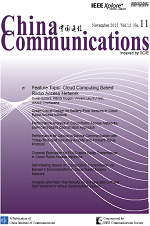STRATEGIES AND SCHEMES
Qiu Xiaofeng, Liu Wenmao, Gao Teng, He Xinxin, Wen Xutao, Chen Pengcheng
2015, 1(11): 177-187.
WoT (Web of Things) integrates smart devices into Web by reusing and extending Web standards. While Web technology makes the developers’ job easier, it faces security, management and efficiency challenges. We propose WoT/SDN, the architecture of resource oriented WoT built on SDN (Software Defined Network), in which applications could be developed through resource subscription and Mashup with the programmability provided by SDN. The key components are designed, including Security and Management Controller (SMC), various atomic services and resource subscription syntax. Three applications covering device management, data access and security protection are demonstrated. Compared to traditional resource-oriented WoT systems, our test results show that SDN, with its logically centralized control capability and awareness of flow forwarding, provides new opportunity to improve performance, simplify management and enhance security for WoT.
